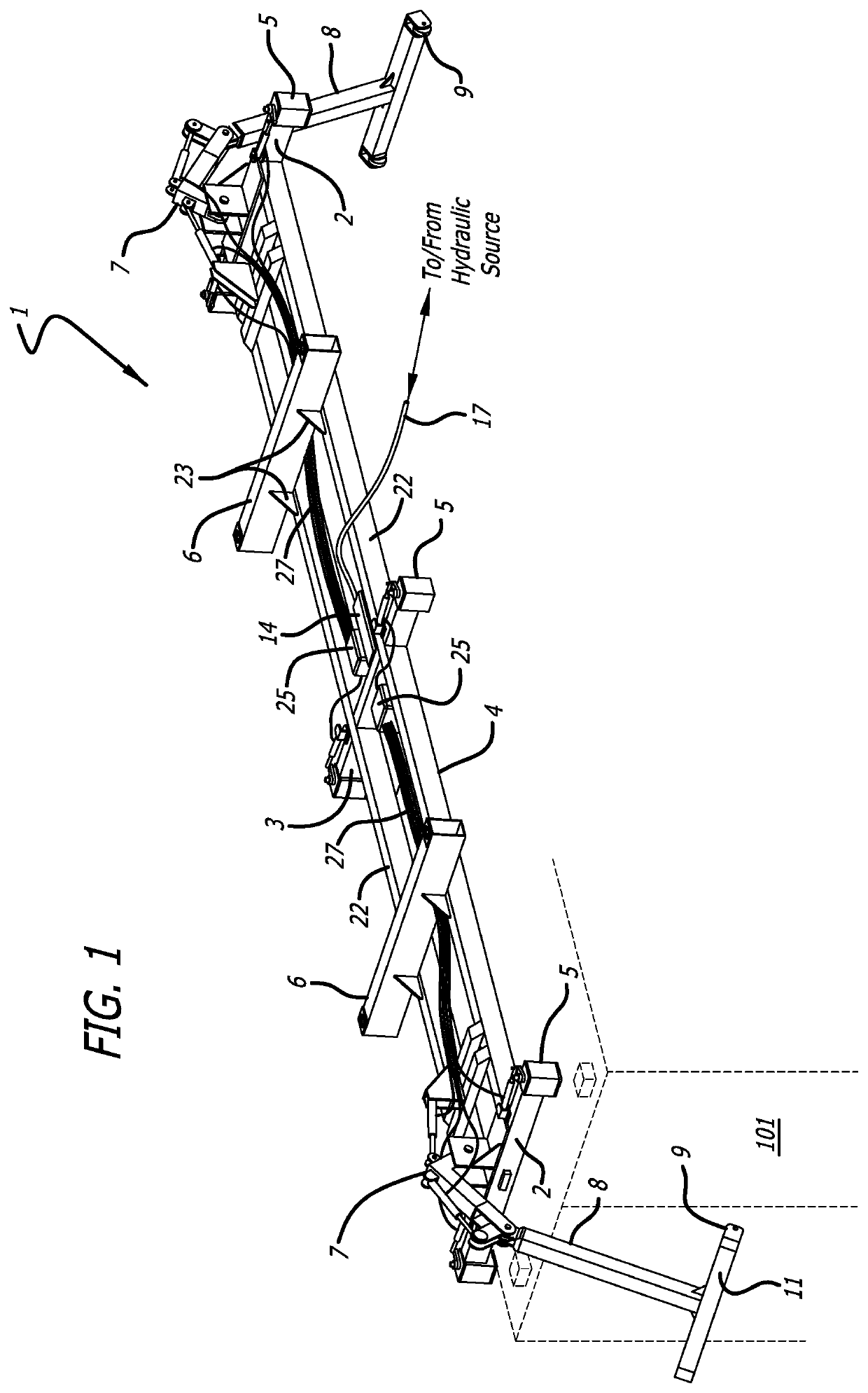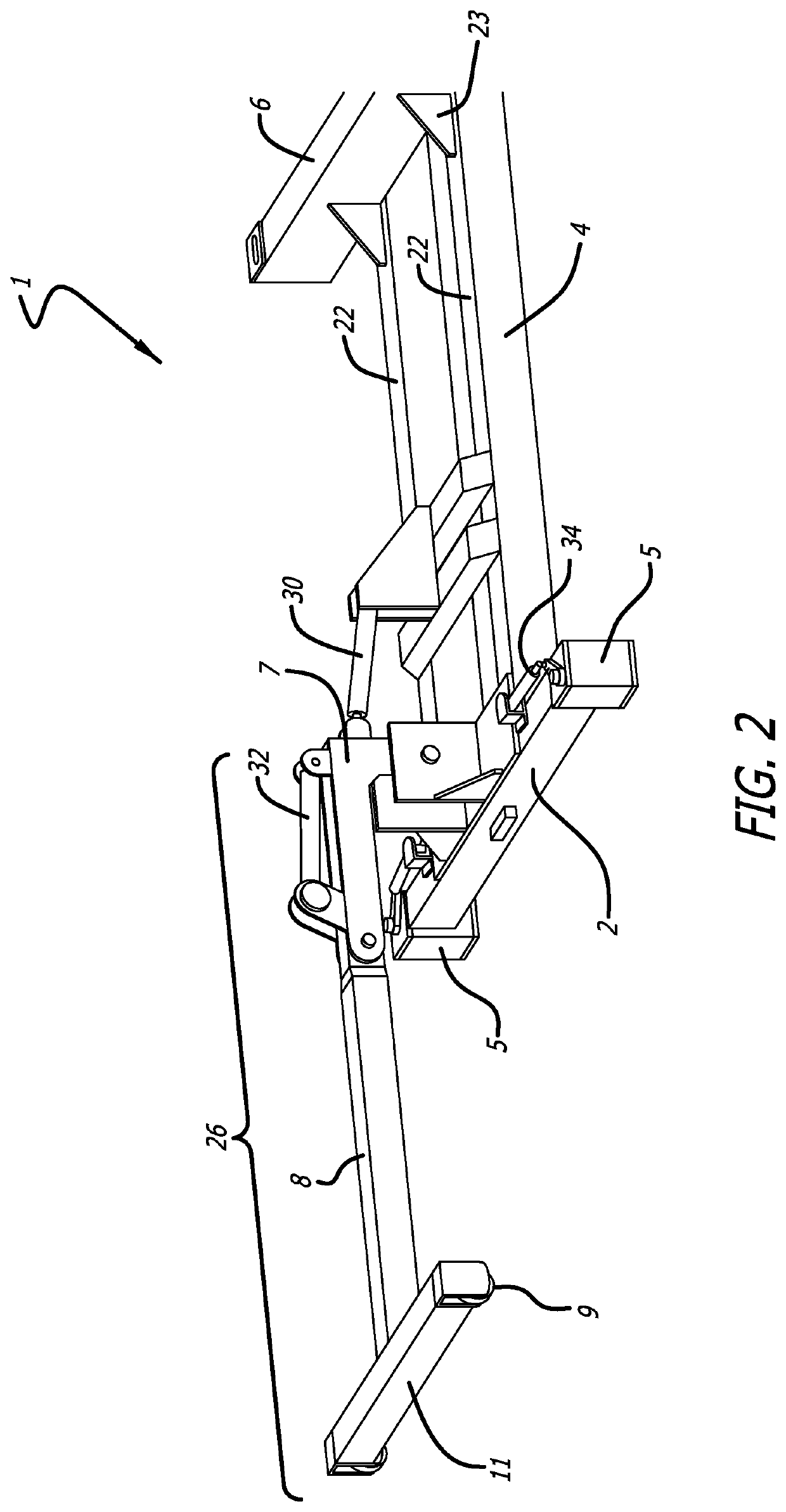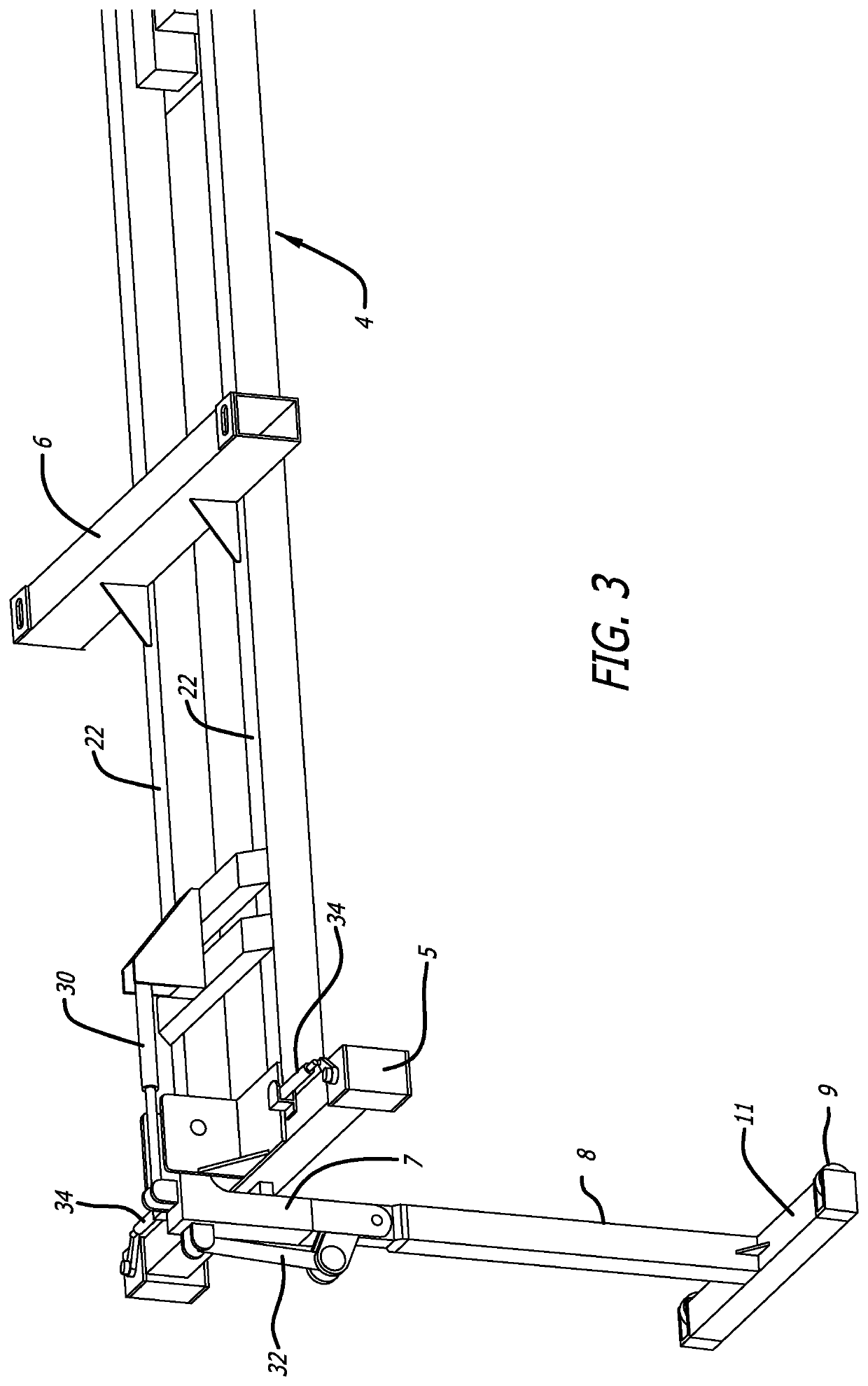Collapsible shipping container actuator
a technology for shipping containers and actuators, applied in the direction of load-engaging elements, gearing, packaging, etc., can solve the problems of uneconomical voyage of such ships, inefficiency must be made up elsewhere, and the empty container transportation is a non-profitable use of the vessel's cargo hold, so as to avoid racking, prevent sagging, and be more sturdy and reliable.
- Summary
- Abstract
- Description
- Claims
- Application Information
AI Technical Summary
Benefits of technology
Problems solved by technology
Method used
Image
Examples
Embodiment Construction
[0016]FIG. 1 illustrates a first preferred embodiment of an actuator for a collapsible container such as, for example, the container disclosed in U.S. Pat. No. 9,045,280, the content of which is fully incorporated herein by reference. Actuator 1 can preferably be maneuvered by a modified fork lift truck using a head block or a plurality of lifting cables (not shown), although cranes and other lifting devices are also compatible with the actuator 1. The actuator may receive hydraulic energy from the forklift's onboard hydraulic system and utilize the hydraulic energy to manipulate the various pistons and mechanisms managed by the actuator 1. A main fluid line 17 conveys hydraulic fluid to a hydraulic fluid manifold engine 14, which in turn can utilize the hydraulic fluid via manifolds 25 lines 27 to operate the various mechanisms and pistons on the actuator.
[0017]The backbone of the actuator is a frame 4 comprising a pair of full length tubular beams 22 supporting thereon a pair of t...
PUM
 Login to View More
Login to View More Abstract
Description
Claims
Application Information
 Login to View More
Login to View More - R&D
- Intellectual Property
- Life Sciences
- Materials
- Tech Scout
- Unparalleled Data Quality
- Higher Quality Content
- 60% Fewer Hallucinations
Browse by: Latest US Patents, China's latest patents, Technical Efficacy Thesaurus, Application Domain, Technology Topic, Popular Technical Reports.
© 2025 PatSnap. All rights reserved.Legal|Privacy policy|Modern Slavery Act Transparency Statement|Sitemap|About US| Contact US: help@patsnap.com



